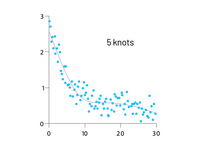



However, Excel users also report limitations of the software as it applies to generating publication-quality graphs (e.g., Excel fails to export high-quality graphs, requires workarounds for multiple-baseline design graphs Haddock & Iwata, in press). Behavior analysts use Excel most often ( Haddock & Iwata, in press), likely because it is relatively inexpensive and widely available, and it offers many desirable capabilities for working graphs (e.g., spreadsheets with macros). With increased availability of graphing software (e.g., Microsoft Excel, GraphPad Prism, Systat SigmaPlot), most behavior analysts now create visual displays of their data electronically ( Haddock & Iwata, in press). These results suggest that individuals should view both data-input and graphing video models prior to depicting single-case design data in Prism but that these skills can maintain at high levels of accuracy without continued access to the training materials.īehavior analysts visually depict and inspect data as part of their research and practice to detect relations between environmental variables and behavior ( Bourret & Pietras, 2012). We observed training effects generalize to data-input-plus-graphing sessions once behavior technicians experienced all relevant video models. The video models resulted in mastery of data-input and graphing skills when assessed individually. We evaluated the generality of the training procedures by assessing both skills during data-input-plus-graphing sessions without access to the video models. We used a concurrent multiple-probe-across-behavior design with two behavior technicians to assess data-input and graphing skills separately prior to and during access to relevant video models. We replicated and extended Mitteer, Greer, Fisher, and Cohrs (2018) by examining the effects of a video model on inputting data into GraphPad Prism, which is a necessary skill for graph construction.


 0 kommentar(er)
0 kommentar(er)
